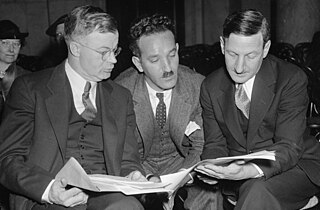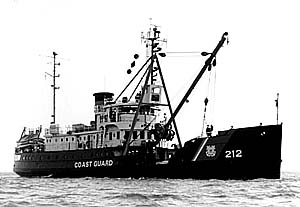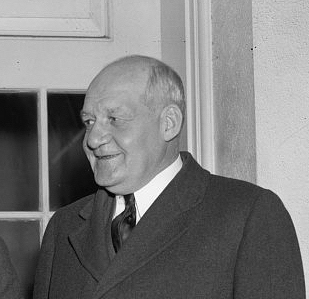External links
- Finding Court Cases and NLRB Decisions by Subject -- LRRM from the School of Labor & Industrial Relations, Michigan State University
Labor Relations Reference Manual (LRRM) is an American case reporter devoted exclusively to labor law published by the Bureau of National Affairs (BNA). It is published 3 times a year and includes decisions of federal and some state courts, the National Labor Relations Board (NLRB), state agencies, and other material of reference value. It is one part of the Labor Relations Reporter service (weekly/biweekly) and has been published since 1937.
Example of legal citation:

The National Labor Relations Board (NLRB) is an independent agency of the federal government of the United States with responsibilities for enforcing U.S. labor law in relation to collective bargaining and unfair labor practices. Under the National Labor Relations Act of 1935 it supervises elections for labor union representation and can investigate and remedy unfair labor practices. Unfair labor practices may involve union-related situations or instances of protected concerted activity. The NLRB is governed by a five-person board and a General Counsel, all of whom are appointed by the President with the consent of the Senate. Board members are appointed to five-year terms and the General Counsel is appointed to a four-year term. The General Counsel acts as a prosecutor and the Board acts as an appellate quasi-judicial body from decisions of administrative law judges.
The duty of fair representation is incumbent upon Canadian and U.S. labor unions that are the exclusive bargaining representative of workers in a particular group. It is the obligation to represent all employees fairly, in good faith, and without discrimination.
National Labor Relations Board v Jones & Laughlin Steel Corporation, 301 U.S. 1 (1937), was a United States Supreme Court case that upheld the constitutionality of the National Labor Relations Act of 1935, also known as the Wagner Act. The case represented a major expansion in the Court's interpretation of Congress's power under the Commerce Clause and effectively spelled the end to the Court's striking down of New Deal economic legislation.
An unfair labor practice (ULP) in United States labor law refers to certain actions taken by employers or unions that violate the National Labor Relations Act of 1935 29 U.S.C. § 151–169 and other legislation. Such acts are investigated by the National Labor Relations Board (NLRB).

Nathan Witt, born Nathan Wittowsky, was an American lawyer who is best known as being the Secretary of the National Labor Relations Board (NLRB) from 1937 to 1940. He resigned from the NLRB after his communist political beliefs were exposed, and he was accused of manipulating the Board's policies to favor his own political leanings. He was also investigated several times in the late 1940s and 1950s for being a spy for the Soviet Union in the 1930s. No evidence of espionage was ever found.
Lechmere, Inc. v. National Labor Relations Board, 502 U.S. 527 (1992), is a US labor law case of the Supreme Court of the United States on union rights and private property rights. It forbids nonemployee union organizers from soliciting support on private property unless no reasonable alternatives exist.

Moore Dry Dock Company was a ship repair and shipbuilding company in Oakland, California. In 1905, Robert S. Moore, his brother Joseph A. Moore, and John Thomas Scott purchased the National Iron Works located in the Hunter's Point section of San Francisco, and founded a new company, the Moore & Scott Iron Works Moore had previously been vice president of the Risdon Iron Works of San Francisco. Scott was nephew to Henry T. and Irving M. Scott, owners of the nearby Union Iron Works, where John had risen from apprentice to superintendent. Their new business was soon destroyed by fire resulting from the San Francisco earthquake.

John Mills Houston was a member of the United States House of Representatives from the 5th congressional district of Kansas from 1935 to 1943. He was also a member of the National Labor Relations Board from 1943 to 1953, originally appointed by Franklin Roosevelt.
NLRB v. Mackay Radio & Telegraph Co., 304 U.S. 333 (1938), is a United States labor law case of the Supreme Court of the United States which held that workers who strike remain employees for the purposes of the National Labor Relations Act (NLRA). The Court granted the relief sought by the National Labor Relations Board, which sought to have the workers reinstated by the employer. However, the decision is much better known today for its obiter dicta in which the Court said that an employer may hire strikebreakers and is not bound to discharge any of them if or when the strike ends.
Communications Workers of America v. Beck, 487 U.S. 735 (1988), is a decision by the United States Supreme Court which held that, in a union security agreement, unions are authorized by statute to collect from non-members only those fees and dues necessary to perform its duties as a collective bargaining representative. The rights identified by the Court in Communications Workers of America v. Beck have since come to be known as "Beck rights," and defining what Beck rights are and how a union must fulfill its duties regarding them is an active area of modern United States labor law.

Joseph Warren Madden was an American lawyer, judge, civil servant, and educator. He served as a judge of the United States Court of Claims and was the first Chairman of the National Labor Relations Board. He received the Medal of Freedom in 1947.

Wilma B. Liebman is an American lawyer and civil servant who is best known for serving as a member of the National Labor Relations Board (NLRB). She was designated chair of the board by President Barack Obama on January 20, 2009, becoming only the second woman to lead the NLRB.
New Process Steel, L.P. v. NLRB, 560 U.S. 674 (2010), is a US labor law case of the United States Supreme Court holding that the National Labor Relations Board (NLRB) cannot make decisions without at least three members on a panel.
Betty Jane Southard Murphy was an American attorney who was the first woman to serve on the National Labor Relations Board, serving as the agency's eighth chair from 1975 to 1977. She was also the first woman to lead the United States Department of Labor Wage and Hour Division, and co-founded the National Women's Political Caucus and the Republican National Lawyers Association.
Ford Motor Co. v. NLRB, 305 U.S. 364 (1939), is an 8-to-0 decision by the Supreme Court of the United States which held that an administrative agency of the United States government, seeking enforcement of its orders, cannot withdraw its petition or the transcript of the administrative hearing once these have been submitted to the appropriate court. Whether the agency should be permitted to withdraw its petition is a decision for the court of appeals, the Supreme Court said.
National Labor Relations Board v. Fansteel Metallurgical Corporation, 306 U.S. 240 (1939), is a United States Supreme Court case on labor laws in which the Court held that the National Labor Relations Board had no authority to order an employer to reinstate workers fired after a sit-down strike, even if the employer's illegal actions triggered that strike.
In re Labor Board, 304 U.S. 486 (1938), is a 5-to-2 decision by the Supreme Court of the United States which held that the National Labor Relations Act requires the filing of a petition and a transcript in order for an enforcement order to proceed in federal court, and that a writ of prohibition and writ of mandamus are appropriate measures to take in quashing a petition when no transcript has been filed.
NLRB v. Columbian Enameling & Stamping Co., 306 U.S. 292 (1939), is a US labor law case where the US Supreme Court held 5-to-2 that the National Labor Relations Act required decisions of the National Labor Relations Board (Board) to be based on substantial evidence. The Supreme Court overturned a ruling of the Board for not being based on substantial evidence. The Court also held that only the representative of the workers could issue collective bargaining proposals under the law, and that proposals transmitted by a third party did not trigger the Act's protections or duties.
National Labor Relations Board v. Sands Manufacturing Co., 306 U.S. 332 (1939), is United States labor law case, decided by a majority of 5 to 2 by the Supreme Court of the United States, which overturned a decision by the National Labor Relations Board because it was not supported by substantial evidence. The Court defined collective bargaining under the National Labor Relations Act to mean that proposals and responses to proposals were pending, and that future meetings were being planned. Absent such conditions, bargaining was not occurring. The Court also held that an employer did not violate the Act if it chose to deal with the employees on an individual basis.

Harry Alvin Millis was an American civil servant, economist, and educator and who was prominent in the first four decades of the 20th century. He was a prominent educator, and his writings on labor relations were described at his death by several prominent economists as "landmarks". Millis is best known for serving on the "first" National Labor Relations Board, an executive-branch agency which had no statutory authority. He was also the second chairman of the "second" National Labor Relations Board, where he initiated a number of procedural improvements and helped stabilize the Board's enforcement of American labor law.